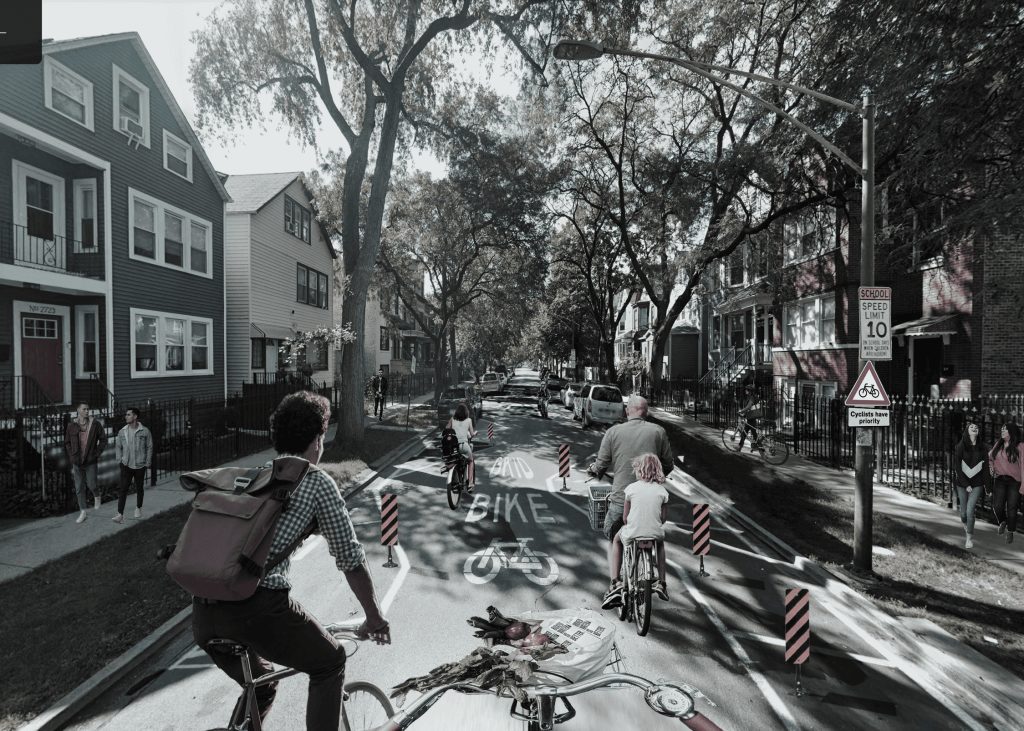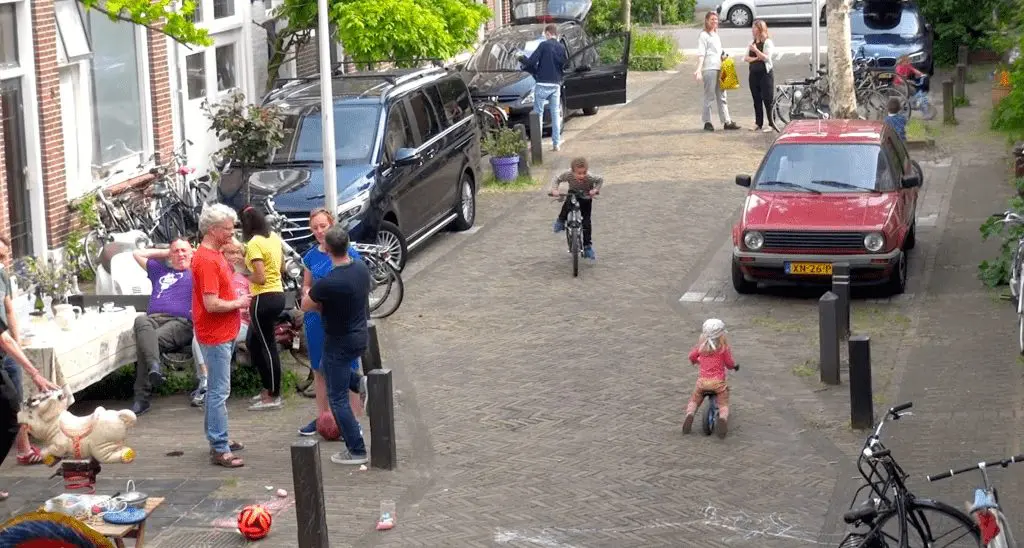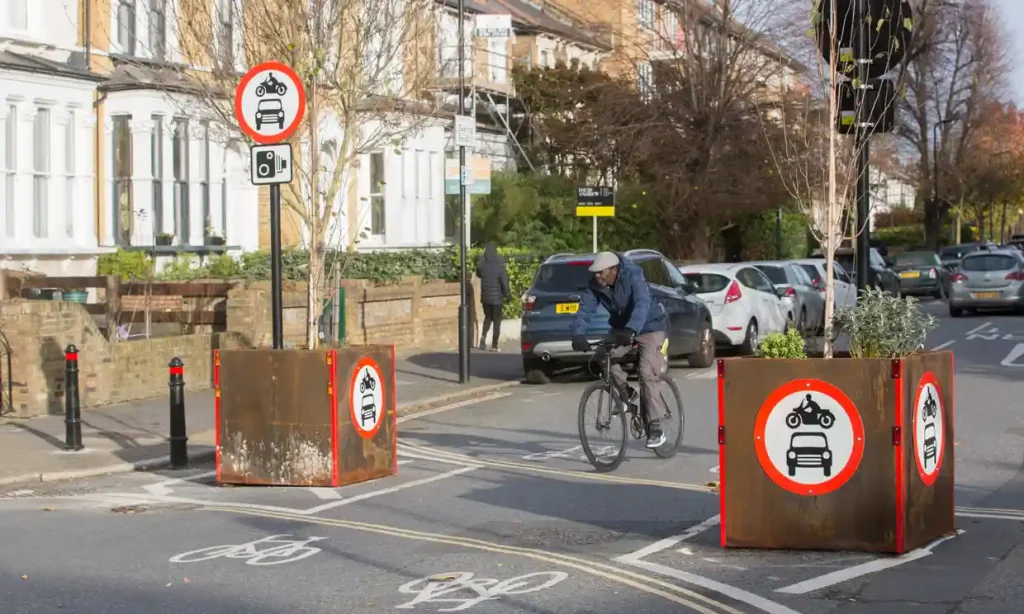
A bike grid is a network of streets designed to prioritize cyclists and pedestrians by making roads safer and more accessible for all using infrastructure, not enforcement. Our goal is to transform 10% of Chicago’s streets, or at least 450 miles with a primary focus on residential areas. We plan to achieve this by installing a combination of easily deployment infrastructure like concrete planters, quick-build installation, and better lane markings. This will be followed by more permanent installations, such as traffic diverters, chicanes, curb extensions, bumpouts, and speed cushions. This approach will create a safer and more enjoyable environment for cyclists and pedestrians throughout Chicago.
In recent years, various cities worldwide have embraced the concept of bike grids, including Cambridge, Massachusetts, Copenhagen, Amsterdam, Utrecht, Portland, Seville, and Bogotá. The results have been tremendously positive, leading to a noticeable decrease in traffic congestion.
Moreover, these bike grids have contributed to a reduction in pollution and traffic violence, making streets safer for everyone. As an added bonus, bike grids increase the diversity of modal share: citizens engage in more active forms of transportation, such as walking, cycling, and rollerskating.
Introducing the bike grid in Chicago provides an affordable solution for significantly enhancing the city’s transportation infrastructure. With a low financial barrier, it promotes safer streets for cyclists and pedestrians alike. By using existing roadways and economically viable traffic-calming measures, Chicago can revitalize its urban landscape without burdening municipal resources. The cost-effectiveness of the Bike Grid leaves no excuse for postponing its implementation.
The bike grid’s cost-effectiveness lies in its smart use of infrastructure, rather than relying on enforcement, to achieve its goals. By focusing on implementing practical and affordable traffic-calming measures, bike grid roads reduce vehicle speeds without incurring the significant infrastructure and labor expenses associated with ongoing enforcement efforts. This approach not only minimizes costs but also creates a lasting impact on road safety.
The bike grid offers a unique advantage in that it can be swiftly deployed, ensuring a timely improvement in urban transportation. Its ease of deployment allows for equitable distribution across all neighborhoods, fostering better connectivity between various areas of the city. By focusing on rapid and fair implementation, the bike grid helps create a more cohesive urban environment where people can seamlessly travel from one location to another.

To get this, we need a couple of things from our elected officials:
- Vote for our ordinance which would require the CDOT commissioner to install affordable traffic calming infrastructure on at least 450 miles of streets as part of a connected network of safe and slow residential streets.
- Sponsor/vote to change the Illinois State Vehicle Code to allow for 10mph speed limits; the current minimum is 20mph.
- Sponsor/vote to change the Chicago Municipal Code to reflect the new state code.

CDOT’s Shared Streets Program is a great example of how rapid deployment and temporary infrastructure can create meaningful change. The placement of inexpensive, construction barrels, and signage instantly transformed sections of residential streets into low-stress bike and pedestrian facilities. But it can’t stop there and we certainly can’t let a vocal minority get in the way of a safer, more equitable, healthier, and better city. We will keep organizing till it happens.